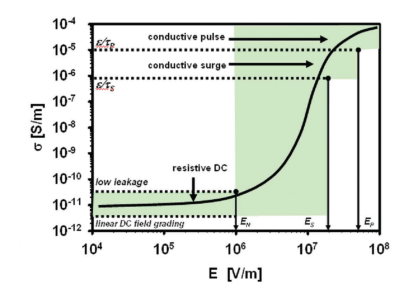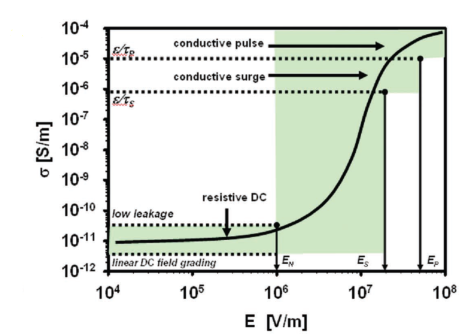Project-Management
| Name | Working area(s) | Contact | |
|---|---|---|---|

| Dr.-Ing. Rashid Hussain 2015 - 2020 |
Project description
Background
Because of the energy revolution it has become necessary to transmit a huge amount of energy over long distances, for example to transport energy from offshore windfarms in the north to the consumers in the south in Germany. According to this it is essential to have a network expansion.
A contributing factor of the network expansion is the HVDC technique which enables a reduction of the losses from 30 to 50 percent in comparison to traditional three-phase power systems. For example the power transmission via cable is limited to approximately 80 km. In excess of 80 km it is mandatory to use HVDC transmission technique. This example shows the importance of the HVDC technique concerning the energy revolution.
Field grading
An important factor regarding to the HVDC technique is the behavior of the insulating materials used in the utilities. The behavior under DC stress can be very different compared to AC stress. For example the charge accumulation under DC stress can cause a distortion of the electric field distribution which can lead to a breakdown of the whole device. For AC systems field grading can be done by geometric, capacitive, refractive or resistive field grading techniques. From these possibilities the refractive method (grading effect by different permittivity) is not useful for DC applications because it is based on time variable voltage. All the remaining field grading techniques are in principle useful for DC applications.
However DC applications are exposed to a combination of resistive and capacitive field. In order to ensure the transient – like switching on and off – and the steady operation condition one has to optimize the insulating material respectively. In recent years there has been a promising development in so called nonlinear resistive field grading. The basic principle behind this technique is that the conductivity of the insulating material has a nonlinear dependency of the electric field strength. This makes it possible to achieve an optimized behavior of the field grading material.
Goal of the project
Within the framework of this project insulating materials shall be investigated and developed for HVDC applications (especially for HVDC cable fittings). For this purpose cooperation with an industrial partner was made. During this cooperation different polymeric insulating materials shall be analyzed. Additional different kinds of fillers are mixed into the basic material (silicone rubber) and their influence is observed. With the aid of such fillers the nonlinearity of the composite (the mixture of filler and basic insulating material) should be achieved.
According to this a test circuit has to be developed which enables the characterization of the materials such as the electrical conductivity or permittivity. For this purpose test specimens have to be produced and then characterized. Different types of fillers have to be analyzed and also the optimal filler concentration must be found.






